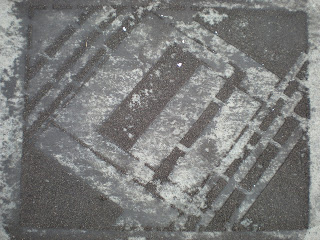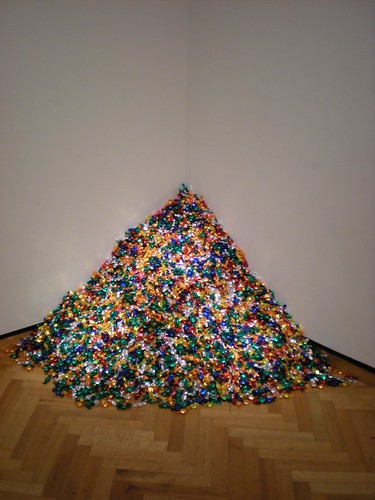
In our discussions about alternate audiences for art, one thing we've considered is the idea that "social space" can be an intimate, specific gesture or a broader one aimed at a more generalized audience. As Justine, Tim, and several others have figured out as their projects develop, creating work for "the public" can be tricky: just because an audience has visual access to the work doesn't mean that they will feel any less alienated or irritated by it than work in a gallery space. They may, in fact, find it more so.
Along these lines, I came across several recent news articles of interest:
Turning Cities into Art Galleries points out the changing role and pertinent questions facing big-budget public art as it shifts from basic monuments and 'beautification' (a problematic term when dealing with any audience) toward more difficult and sometimes uncomfortable disruptions of the everyday. Though now a widely respected public monument, Maya Lin's famous
Vietnam Veteran's Memorial was the focus of intense controversy among Vietnam vets in particular when it was first installed. Richard Serra's Federal Plaza
Tilted Arc was not so fortunate. The $175,000 installation was eventually torn down due to
intense public outcry. Eegh. (
more on that story for those who are interested)

For those of you interested in street art,
One Person's Vandalism is Another's Art defines some differences between traditional graffiti and more recent trends in street art, as well as some of the ways that the language of street art is being coopted by advertisers and even political campaigns... and more interestingly,
the backlash against street art (and
against street art-esque advertising) by other artists, leading back again to similar questions of audience. Should artists keep their art "to themselves," within sanctioned venues? Are there other, perhaps more interesting ways to engage the boundaries of place/space/audience? There are certainly worthwhile arguments both for and against this stance, and I'd be interested to hear your opinions.
Finally, I just learned that New York has recently adopted some of Chicago's stringent anti-graffiti laws, leading to crackdowns on such ephemeral incursions as sidewalk chalking (including
this infamous case) as well as a ban on carrying spray paint and wedge-tip markers by people under 21.
Comments? Other links? Images? I'm curious to hear any of your thoughts on the topic, as well as some interesting examples of artists working with less generally "public" (i.e. more specific) approaches to audience, if you can find some.


















